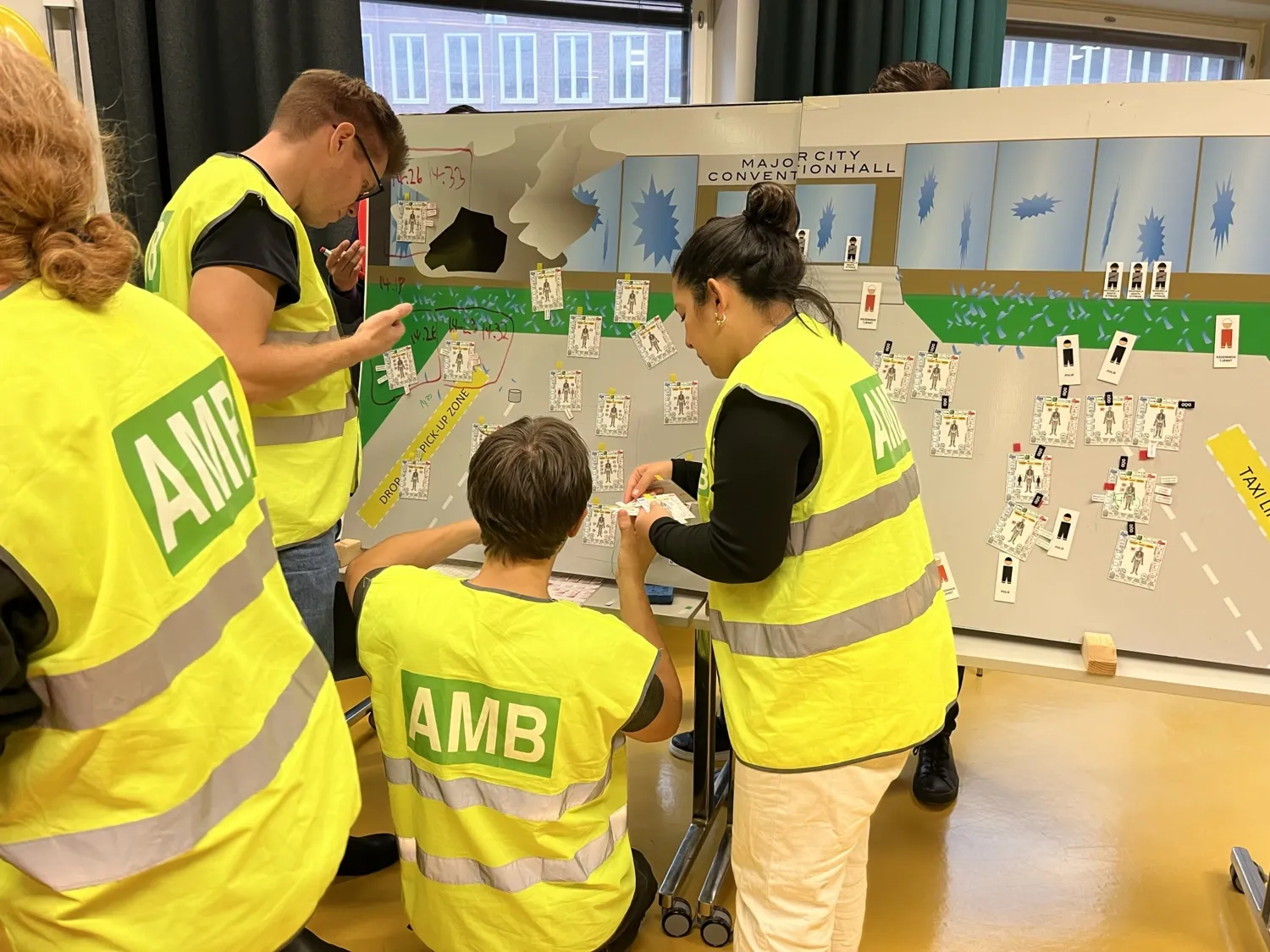Course in disaster medicine for specialist doctors conducted exercises in Widerströmska for the first time

For three days, the classrooms in the Widerströmska building were particularly buzzing, when the research group Global Disaster Medicine conducted their course ‘Disaster Medicine - Health Care Response to Major Injuries, Health Crises and Disasters’ for specialist doctors. The research group has been running the course since 2018, but this was the first time it was held at Widerströmska.

Courses for specialist doctors (often referred to as SK courses in Swedish) are government-funded courses, which the National Board of Health and Welfare is responsible for. They are intended for doctors undergoing specialisation training. The SK course in disaster medicine, taught by the Global Disaster Medicine Health Needs and Responses research group at the Department of Global Health, is set to teach future specialist doctors the skills needed to work with medical response to large-scale casualties and disasters. It includes practical exercises as well as more theoretical lectures and seminars.
On 9-11 October, the course was held in the Widerströmska building for the first time. Previously, other premises have been used for the course. Anneli Eriksson, who is part of the course leadership team, is pleased with the result.
– ‘It's a course that demands a lot of space, especially when we do the practical exercises, but it worked well to be in Widerströmska. And of course, it feels extra good to do the course here, since we get a more natural connection to where we as a research group are located.
Mass casualty exercise puts new knowledge into practice
On the last day of the course, 11 October, there was an extra level of hustle and bustle in the building, when the mass casualty simulation exercise MACSIM took place. In the exercise, students practise managing a mass casualty event in real time, with the help of patients and patient flows displayed on large whiteboards.
– It is good to end the course with a mass casualty exercise like MACSIM, in order to put into practice what we have been teaching during the week. Or as much into practice as you can get in a simulation. Earlier on during the course, we had also done our own mass casualty simulation exercise AnTriEx. The general idea is that the course should be relatable to real-life conditions and that the students feel that they have real benefit from what they learn, says Anneli Eriksson.
This year's course is now completed. Whether there will be lessons and mass casualty exercises again in Widerströmska next year will depend on the planning and budget for future SK courses.
